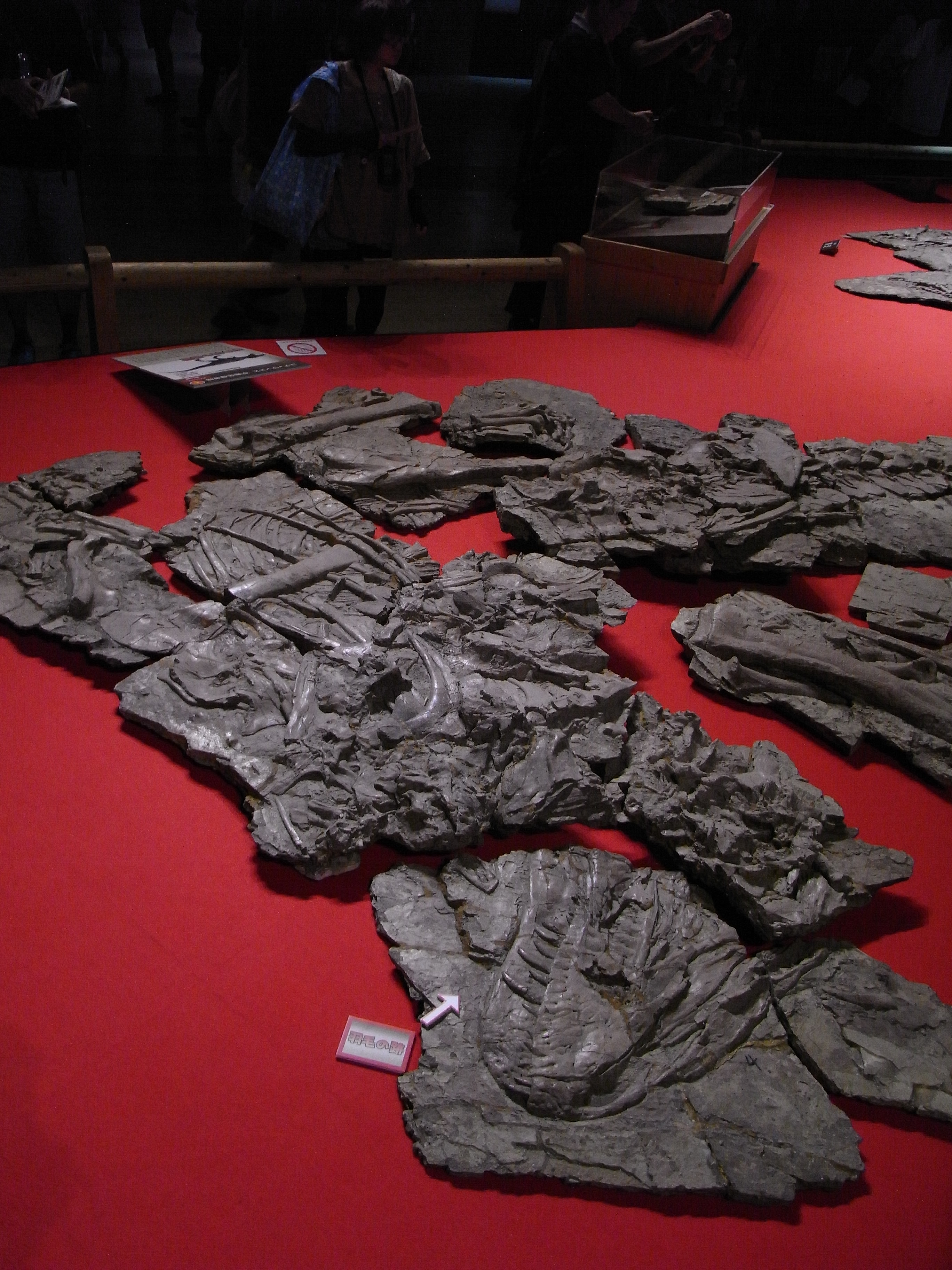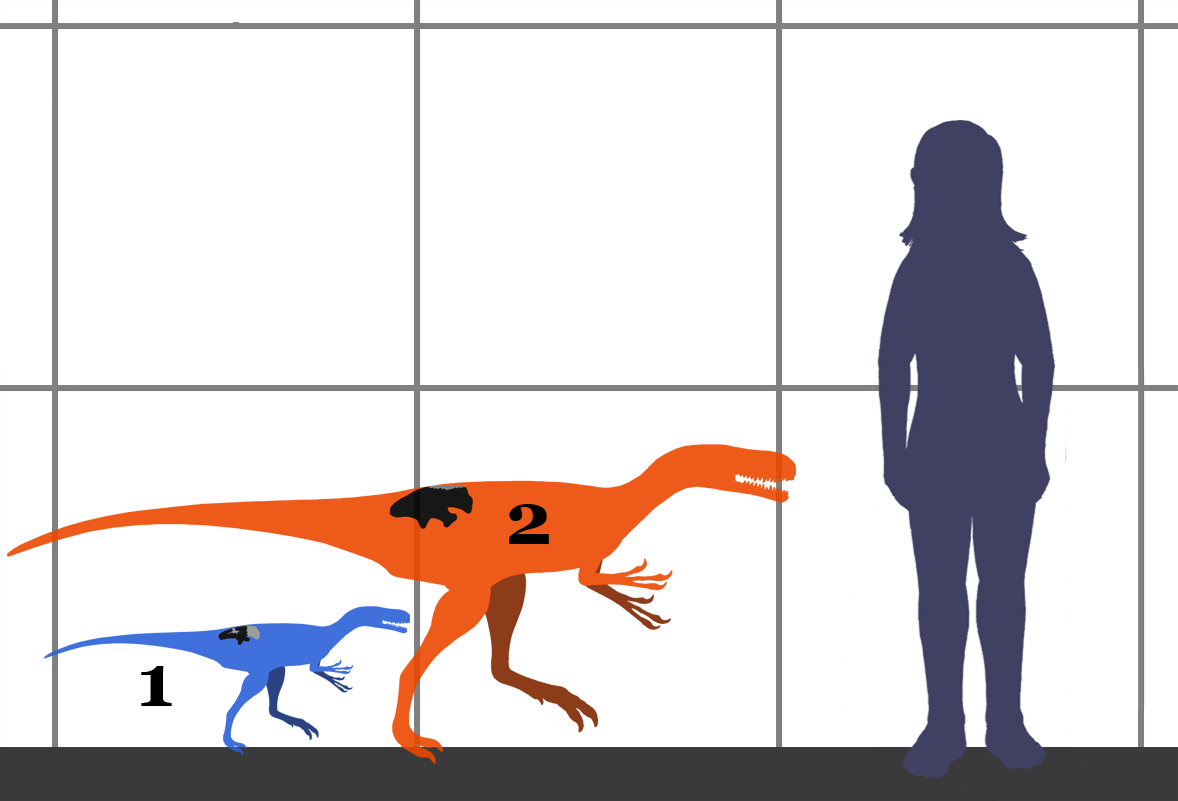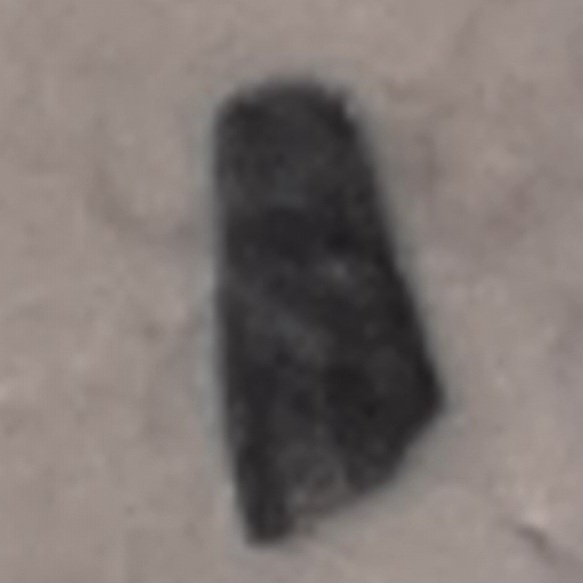|
Proceratosauridae
Proceratosauridae is a family or clade of tyrannosauroid theropod dinosaurs from the Middle Jurassic to the Early Cretaceous. Distinguishing features Unlike the advanced tyrannosaurids but similar to primitive tyrannosauroids like '' Dilong'', proceratosaurids were generally small (with the exception of the possible proceratosaurids '' Yutyrannus'' and '' Sinotyrannus'') and had fairly long, three-fingered arms capable of grasping prey. In comparison to other members of Tyrannosauroidea, proceratosaurids can be distinguished by the following features according to phylogenetic analyses by Averianov ''et al''. (2010) and Loewen ''et al''. (2013) : * A sagittal cranial crest formed by the nasals starting at the junction of the premaxilla and nasals. * Extremely elongated external nares, with posterior margins posterior to the anterior margin of the antorbital fossa and maxillary fenestrae. * A short ventral margin of the premaxilla. * The depth of the antorbital fossa ventral t ... [...More Info...] [...Related Items...] OR: [Wikipedia] [Google] [Baidu] |
Sinotyrannus
''Sinotyrannus'' (meaning "Chinese tyrant") is an extinct genus of large tyrannosauroid theropod dinosaurs known from the Early Cretaceous Jiufotang Formation of Liaoning, China. This genus contains a single species, ''Sinotyrannus kazuoensis'', known from a single mature specimen including a partial skull, some vertebrae, and part of the pelvic girdle. While it exhibited greater body size that would put it on par with the later tyrannosaurids such as ''Tyrannosaurus'' (a group that ''Sinotyrannus'' was initially suspected of being in), ''Sinotyrannus'' was probably a member of the basal tyrannosauroid family known as the Proceratosauridae. This family originated in the Jurassic, whose members are known from Europe and Asia. ''Sinotyrannus'' and its close relative '' Yutyrannus'' appear to have been surprisingly large compared to most tyrannosauroids of the Early Cretaceous, such as '' Dilong''. Most of the world during the Early Cretaceous was dominated by more basal tetanur ... [...More Info...] [...Related Items...] OR: [Wikipedia] [Google] [Baidu] |
Tyrannosauroidea
Tyrannosauroidea (meaning 'tyrant lizard forms') is a superfamily (or clade) of coelurosaurian theropod dinosaurs that includes the family Tyrannosauridae as well as more basal relatives. Tyrannosauroids lived on the Laurasian supercontinent beginning in the Jurassic Period. By the end of the Cretaceous Period, tyrannosauroids were the dominant large predators in the Northern Hemisphere, culminating in the gigantic ''Tyrannosaurus''. Fossils of tyrannosauroids have been recovered on what are now the continents of North America, Europe and Asia. If Megaraptora is part of Tyrannosauroidea, this would extend the distribution of the group to Australia and South America, and possible fragmentary remains of tyrannosauroids have also been reported from these continents. Tyrannosauroids were bipedal carnivores, as were most theropods, and were characterized by numerous skeletal features, especially of the skull and pelvis. Early in their existence, tyrannosauroids were small predat ... [...More Info...] [...Related Items...] OR: [Wikipedia] [Google] [Baidu] |
Proceratosaurus Bradleyi
''Proceratosaurus'' ( ) is a genus of theropod dinosaur that lived during the Middle Jurassic in what is now England. The holotype and only known specimen consists of a mostly complete skull with an accompanying lower jaw and a bone, found near Minchinhampton, a town in Gloucestershire. It was originally described as a species of ''Megalosaurus'' in 1910, ''M. bradleyi'', but was moved to its own genus, ''Proceratosaurus'', in 1926. The genus was named for its supposed close relationship with ''Ceratosaurus,'' later shown to be erroneous, due to perceived resemblance of ''Proceratosaurus''' incomplete cranial crest to ''Ceratosaurus nasal horn. A small to medium-sized dinosaur, the skull of ''Proceratosaurus'' is long as preserved, and the dinosaur is estimated to have measured around in length. The skull is characterised by a number of distinguishing features, including a cranial crest that begins at the junction between the and the nasal bone. The teeth are heterodont, ha ... [...More Info...] [...Related Items...] OR: [Wikipedia] [Google] [Baidu] |
Yutyrannus
''Yutyrannus'' (meaning "feathered tyrant") is a genus of proceratosaurid tyrannosauroid dinosaur which contains a single known species, ''Yutyrannus huali''. This species lived during the early Cretaceous period in what is now northeastern China. Three fossils of ''Yutyrannus huali'' — all found in the rock beds of Liaoning Province — are the largest-known dinosaur specimens that preserve direct evidence of feathers. Discovery and naming ''Yutyrannus huali'' was named and scientifically described in 2012 by Xu Xing ''et al.'' The name is derived from Mandarin Chinese ''yǔ'' (羽, "feather") and Latinised Greek ''tyrannos'' (τύραννος, "tyrant"), a reference to its classification as a feathered member of the Tyrannosauroidea. The specific name consists of the Mandarin ''huáli'' (华丽 simplified, 華麗 traditional, "beautiful"), in reference to the perceived beauty of the plumage. ''Yutyrannus'' is known from three nearly complete fossil specimens (an adult ... [...More Info...] [...Related Items...] OR: [Wikipedia] [Google] [Baidu] |
Guanlong
''Guanlong'' (冠龍) is a genus of extinct proceratosaurid tyrannosauroid dinosaur from the Late Jurassic of China. The taxon was first described in 2006 by Xu Xing ''et al.'', who found it to represent a new taxon related to ''Tyrannosaurus''. The name is derived from Chinese, translating as "crown dragon". Two individuals are currently known, a partially complete adult and a nearly complete juvenile. These specimens come from the Oxfordian stage of the Chinese Shishugou Formation. Discovery ''Guanlong'' was discovered in the Dzungaria area of China by a joint expedition by scientists from the Institute of Vertebrate Paleontology and Paleoanthropology and George Washington University, and named by Xu Xing and others in 2006. ''Guanlong'' comes from the Chinese words for "crown", 冠, and "dragon", 龍, referring to the crest. The specific epithet (五彩), ''wucaii'' (Hanyu Pinyin: wǔcǎi), means "multicoloured" and refers to the colours of rock of the Wucaiwan (五彩� ... [...More Info...] [...Related Items...] OR: [Wikipedia] [Google] [Baidu] |
Dilong Paradoxus
''Dilong'' (帝龍, which means 'emperor dragon') is a genus of small basal tyrannosauroid dinosaurs. The only species in the genus is ''Dilong paradoxus'', known from the Lower Cretaceous Yixian Formation of East Asia (in what is now China). The discovery of ''Dilong'' was significant as it provided the first evidence of feathers in tyrannosaurs, something which had previously been suspected for the group. Discovery The ''Dilong'' holotype specimen was found in the Lujiatun Unit of the Yixian Formation near Lujiatun, Beipiao, in western Liaoning Province, China. This formation contains rocks dating to between 125.8–126 million years old. However, specimens have been found in other areas of the Yixian Formation which may vary in age. ''Dilong'' was described by Xu Xing and colleagues in 2004. The name is derived from the Chinese 帝 ''dì'' meaning 'emperor' and 龙 / 龍 ''lóng'' meaning 'dragon'. "Di", "emperor", refers to the relationship of this animal to ''Tyrannosaur ... [...More Info...] [...Related Items...] OR: [Wikipedia] [Google] [Baidu] |
Kileskus
''Kileskus'' (meaning ''lizard'' in the Khakas language) is a genus of tyrannosauroid dinosaur known from partial remains found in Middle Jurassic (Bathonian stage) Itat Formation of Sharypovsky District, Krasnoyarsk Krai (Russia). Fossils recovered include the holotype maxilla, a premaxilla, a surangular, and a few bones from the hand and foot. Additional remains referred to the species include cervical and caudal vertebrae, as well as a fibula. The skull bones are similar to those of ''Proceratosaurus''. The type species is ''K. aristotocus''. ''Kileskus'' was named in 2010 by Averianov and colleagues. Classification ''Kileskus'' has been included in two phylogenetic analyses and found to be a basal proceratosaurid both times. Although it is unknown whether ''Kileskus'' sported a nasal crest, it can be assigned to Proceratosauridae due to a number of other features. These include elongated external nares, a short ventral margin of the premaxilla, and the area of the an ... [...More Info...] [...Related Items...] OR: [Wikipedia] [Google] [Baidu] |
Dilong (dinosaur)
''Dilong'' (帝龍, which means 'emperor dragon') is a genus of small basal tyrannosauroid dinosaurs. The only species in the genus is ''Dilong paradoxus'', known from the Lower Cretaceous Yixian Formation of East Asia (in what is now China). The discovery of ''Dilong'' was significant as it provided the first evidence of feathers in tyrannosaurs, something which had previously been suspected for the group. Discovery The ''Dilong'' holotype specimen was found in the Lujiatun Unit of the Yixian Formation near Lujiatun, Beipiao, in western Liaoning Province, China. This formation contains rocks dating to between 125.8–126 million years old. However, specimens have been found in other areas of the Yixian Formation which may vary in age. ''Dilong'' was described by Xu Xing and colleagues in 2004. The name is derived from the Chinese 帝 ''dì'' meaning 'emperor' and 龙 / 龍 ''lóng'' meaning 'dragon'. "Di", "emperor", refers to the relationship of this animal to ''Tyrannosau ... [...More Info...] [...Related Items...] OR: [Wikipedia] [Google] [Baidu] |
Stokesosaurus
''Stokesosaurus'' (meaning "Stokes' lizard") is a genus of small (around in length), carnivorous early tyrannosauroid theropod dinosaurs from the late Jurassic period of Utah, United States. History From 1960 onwards Utah geologist William Lee Stokes and his assistant James Henry Madsen excavated thousands of disarticulated ''Allosaurus'' bones at the Cleveland-Lloyd Dinosaur Quarry in Emery County, Utah. During the early 1970s, Madsen began to catalogue these finds in detail, discovering that some remains represented species new to science. In 1974 Madsen named and described the type species ''Stokesosaurus clevelandi''. Its generic name honours Stokes. The specific name (zoology), specific name refers to the town of Cleveland, Utah. The holotype (Utah Museum of Natural History, UMNH 2938, also known as UMNH VP 7473 and formerly known as University of Utah, UUVP 2938) was uncovered in the Brushy Basin Member of the Morrison Formation dating from the early Tithonian stage, a ... [...More Info...] [...Related Items...] OR: [Wikipedia] [Google] [Baidu] |
Juratyrant
''Juratyrant'' (meaning "Jurassic tyrant") is a tyrannosauroid dinosaur genus from the late Jurassic period (early Tithonian age) of England. The genus contains a single species, ''Juratyrant langhami'', which was once classed as a species of '' Stokesosaurus''. Discovery The species is known from a single specimen consisting of an "associated partial skeleton represented by a complete pelvis" as well as a partially complete leg and neck, back and tail vertebrae. This skeleton was discovered in 1984 in Dorset. The specimen was mentioned in several papers, but was not formally described until 2008. The species was named in honor of commercial fossil collector Peter Langham, who uncovered the specimen. The specimen was discovered in strata of the Kimmeridge Clay dating from the Tithonian, the final stage of the Late Jurassic, and belonging to the '' Pectinatites pectinatus'' ammonite zone, indicating the fossil is between 149.3 and 149 million years old. Description Paul (201 ... [...More Info...] [...Related Items...] OR: [Wikipedia] [Google] [Baidu] |
Nuthetes
''Nuthetes'' is the name given to a genus of coelurosaurian theropod dinosaur, either a dromaeosaurid or a tyrannosauroid, known only from fossil teeth and jaw fragments found in rocks of the middle Berriasian (Early Cretaceous) age in the Cherty Freshwater Member of the Lulworth Formation in England and also the Angeac-Charente bonebed in France. If it was a dromaeosaurid, ''Nuthetes'' would have been a small predator. Discovery and naming The holotype, DORCM G 913, was collected by Charles Willcox, an amateur paleontologist living at Swanage, from the Feather Quarry near Durlston Bay in a marine deposition of Cherty Freshwater Member of the Lulworth Formation, dating from the middle Berriasian. It consists of an about three inch long left dentary fragment with nine teeth. The holotype was once thought to be lost but was rediscovered during the 1970s in the Dorset County Museum. Later several other teeth and specimen BMNH 48207, another dentary fragment from a somewhat smal ... [...More Info...] [...Related Items...] OR: [Wikipedia] [Google] [Baidu] |











